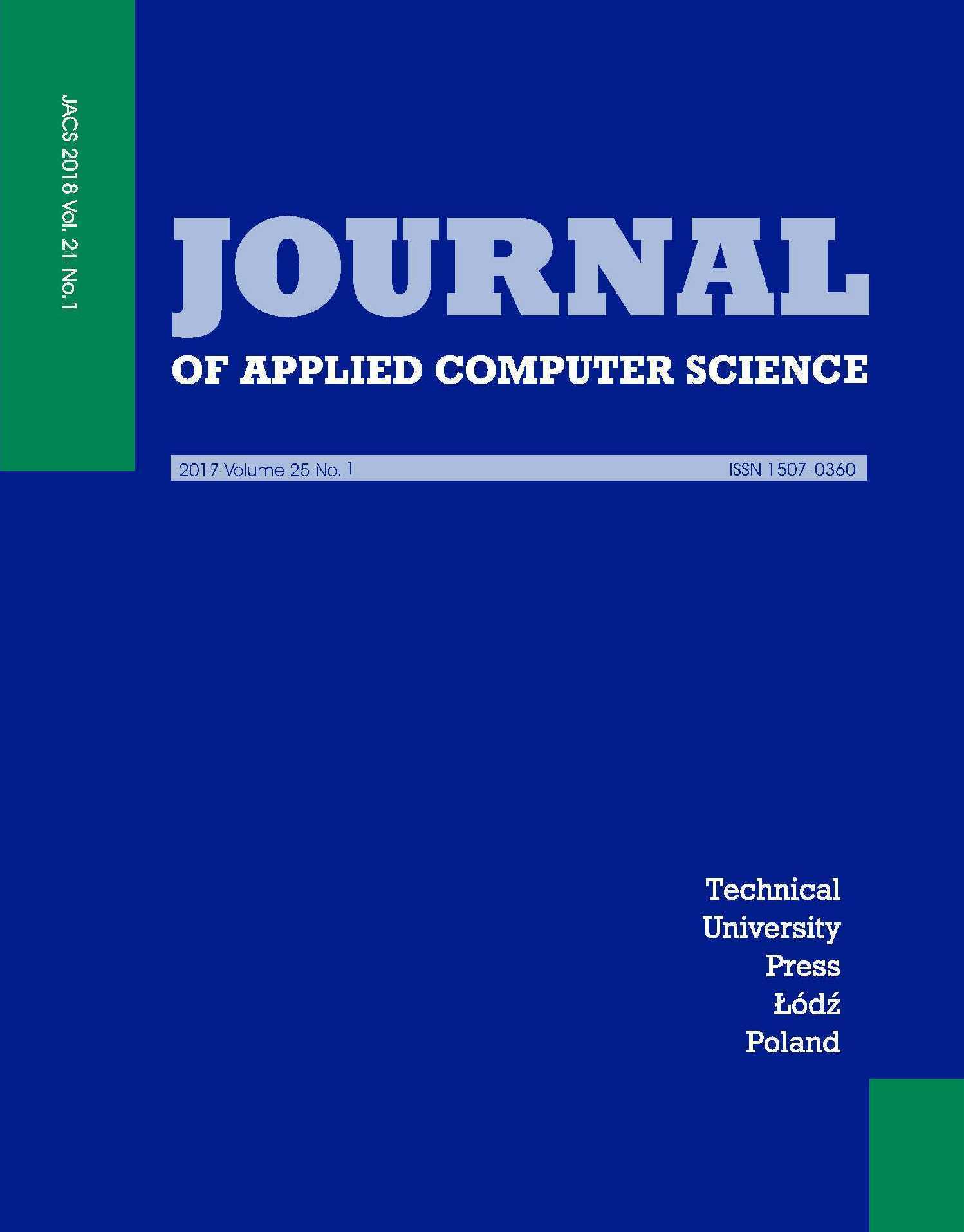Abstrakt
Adaprive Kuwahara filter produces very interesting results and significantly improves the efficiency and performance of the original algorithm in the context of noise reduction without blurring the edges. This document contains the experimental and theoretical comparison of the computational complexity of the modified algorithm and the consideration of optimization methods.
Bibliografia
Bhadouria, V. and Ghoshal, D., A study on genetic expression programmingbased approach for impulse noise reduction in images, Signal, Image and Video Processing, 2016, pp. 575–584.
Esakkirajan, S., V. T. S. A. and PremChand, C., Removal of high density salt and pepper noise through modified decision based unsymmetric trimmed median filter, IEEE Signal Processing Letters, 2011, pp. 287–290.
Bhadouria, V.S., G. D. and Siddiqi, A., A new approach for high density saturated impulse noise removal using decision-based coupled window median filter, Signal, Image Video Processing, 2014.
Nair, M. and Raju, G., A new fuzzy-based decision algorithm for high-density impulse noise removal, Signal, Image Video Processing, 2012, pp. 579–595.
G.M, A., Validity of the single processor approach to achieving large scale computing capabilities, AFIPS spring joint computer conference, 1967, pp. 483–485.
Bartyzel, K., Adaptive Kuwahara filter, Signal, Image and Video Processing, 2015, pp. 1–8.
Bartyzel, K., Algorithms optimization for the image processing and analysis by constructing parallel solutions, Studia Informatica, Systems and information technology, 2015, pp. 5–14.

